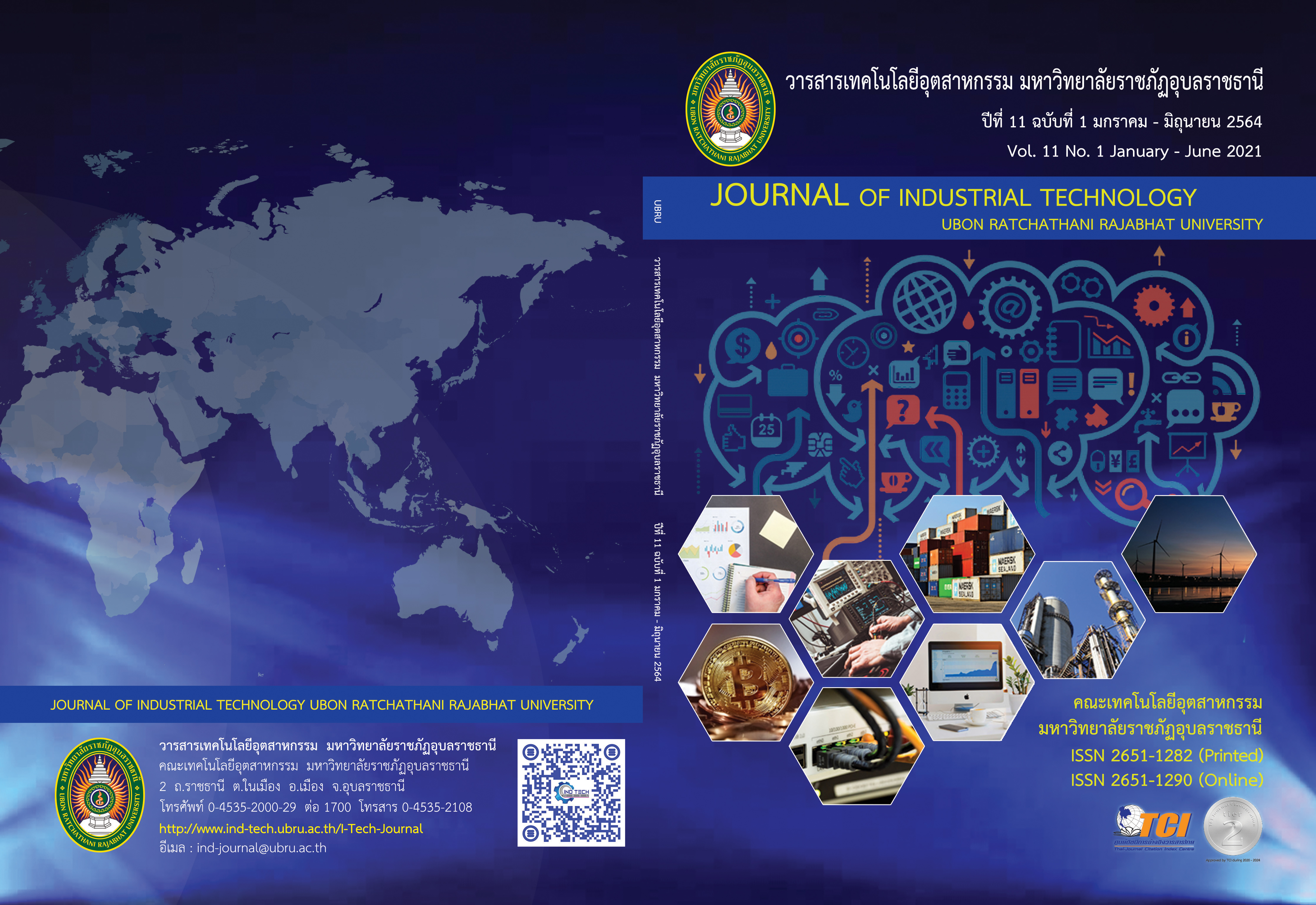การวิเคราะห์วลีภาษาไทยที่มีผลต่อการจำแนกประเภทความคิดเห็น
Main Article Content
บทคัดย่อ
งานวิจัยนี้ มีวัตถุประสงค์เพื่อการวิเคราะห์วลีภาษาไทยที่มีผลต่อการจำแนกประเภทความคิดเห็น ความคิดเห็นโดยส่วนใหญ่จะเป็นวลี ความคิดเห็นของลูกค้าสามารถคัดกรองตามชนิดคำที่ส่งผลต่อประสิทธิภาพของการจำแนกความคิด ดังนั้น วิเคราะห์การใช้คำประเภทต่างๆ จากความคิดเห็นของลูกค้าเกี่ยวกับร้านอาหารเป็นงานวิจัยที่ท้าทาย งานวิจัยนี้ข้อมูลถูกเก็บรวบรวมจากเว็บไซต์ www.wongnai.com จำนวนทั้งหมด 4,487 ข้อความ คณะผู้วิจัยได้นำเอาประเภทคำ 7 ประเภท เพื่อทำการเปรียบเทียบ ได้แก่ คำนาม คำกริยา คำวิเศษณ์ คำนามและคำกริยา คำนามและคำวิเศษณ์ คำกริยาและคำวิเศษณ์ และคำนาม คำกริยาและคำวิเศษณ์ เทคนิคนาอีฟเบย์ เทคนิคซัพพอร์ตเวกเตอร์แมชีน เทคนิคซี 4.5 เทคนิคขั้นตอนวิธีการเพื่อนบ้านใกล้ที่สุด เทคนิคป่าสุ่ม และ เทคนิคเพอร์เซปตรอนหลายชั้น ได้ถูกนำมาใช้ในการสร้างแบบจำลองเพื่อการจำแนก ในการวัดประสิทธิภาพของแบบจำลอง 10-โฟลดครอสวาลิเดชัน ได้ถูกนำมาใช้ในการแบ่งกลุ่มข้อมูลเป็นชุดข้อมูลเรียนรู้ และชุดข้อมูลทดสอบ และใช้ค่าความถูกต้อง ค่าความแม่นยำ และค่าความระลึก มาทำการแสดงประสิทธิภาพของเทคนิคในการสร้างแบบจำลอง จากการทดลองพบว่า เทคนิคนาอีฟเบย์ สามารถสร้างแบบจำลองที่มีประสิทธิภาพในการจำแนกสูงสุด เมื่อใช้คำนาม คำกริยา และคำวิเศษณ์ร่วมกัน โดยมีค่าความถูกต้องสูงถึง 89.08% ค่าความแม่นยำสูงถึง 89.12% และค่าความระลึกสูงถึง 89.10%
Article Details

อนุญาตภายใต้เงื่อนไข Creative Commons Attribution-NonCommercial-NoDerivatives 4.0 International License.
บทความที่ได้รับการตีพิมพ์ในวารสารฯ ท้ังในรูปแบบของรูปเล่มและอิเล็กทรอนิกส์เป็นลิขสิทธิ์ของวารสารฯ
เอกสารอ้างอิง
Wutthithamkhun B. The social media restaurant reviews and the decision making in choosing restaurant in Bangkok. Bangkok University. 2017.
Malik M. Habib S. Agarwal P. A Novel Approach to Web-Based Review Analysis Using Opinion Mining. Procedia Computer Science. 2018; 132: 1202-09.
Thadmuang R. Chirawichitchai N. Thai sentiment analysis of product review online using vector machine support algorithms. Engineering Journal of Siam University. 2017; 18(1): 1-12
Pinmuang N. Thongkam J. Classifying Thai opinions on online media using text mining. Science and Technology Journal. Mahasarakham University. 2018; 37: 372-9.
Shah FP. Patel V. A review on feature selection and feature extraction for text classification. 2016 International Conference on Wireless Communications, Signal Processing and Networking (WiSPNET); 2016. 23-25 March 2016.
Phopli W. Boonmatham S. Meesad P. Ensemble Feature Selection for Sparse Data. The Thirteenth National Conference on Computing and Information Technology; 2017. p. 373-8.
Haruechaiyasak C. Jitkrittum W. Sangkeettrakarn C. Damrongrat C. Implementing News Article Category Browsing Based on Text Categorization Technique. 2008 IEEE/WIC/ACM International Conference on Web Intelligence and Intelligent Agent Technology; 2008. p. 9-12 Dec. 2008.
Nuipian V. Meesad P. A Comparison of Filter and Wrapper Approaches with Text Mining for Text Classification. The Journal of Industrial Technology. 2013; 9(3): 118-29.
Pukkhem N. Junmanee C. Ouisui S. Automatic Thai Folk Wisdom Classification using Data Mining Approach. Thaksin University Journal. 2017; 20(3): 300-07.
Samal B. Behera AK. Panda M. Performance analysis of supervised machine learning techniques for sentiment analysis. International Conference on Sensing, Signal Processing and Security; 2017.
Kongthon A. Haruechaiyasak C. Pailai J. Kongyoung S. The role of Twitter during a natural disaster: Case study of 2011 Thai Flood. PICMET:Technology Management for Emerging Technologies; 2012.
Hossain FMT. Hossain MI. Nawshin S. Machine learning based class level prediction of restaurant reviews. IEEE Region 10 Humanitarian Technology Conference; 2017.
Breiman L. Random Forests. Machine Learning. 2001; 45(1): 5-32.
Xu X. Cao D. Zhou Y. Gao J. Application of neural network algorithm in fault diagnosis of mechanical intelligence. Mechanical Systems and Signal Processing. 2020; 141: 1-13.


